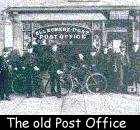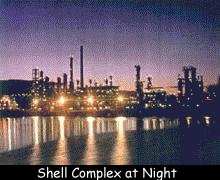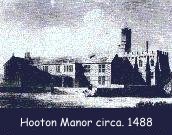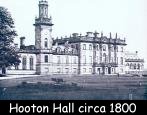A
History of Ellesmere Port, UK,
and Surrounding Villages
|
ELLESMERE PORT AND WHITBY ELLESMERE
PORT and WHITBY are inextricably entwined, since one grew out of the
other. The village of Whitby dates back to Viking days, 'Whitby' being
a 'Norse' name, but was not mentioned in the Doomsday Book, as, it was
at the time included in the parish of Eastham. |
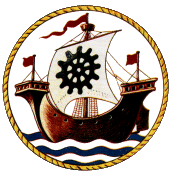
|
|
The
existence of today's Ellesmere Port, which before the cutting of the
Manchester Ship Canal lay on the south bank of the River Mersey, must
be attributed to a number of Shropshire businessmen who, under the chairmanship
of Lord Edward Clive, held meetings in August 1791 and September 1792.
The outcome resulted in an overall plan to construct a canal connecting
the rivers Severn, Mersey and Dee. On April 30th 1793 they won the consent
of Parliament to construct a canal from the River Severn at Shrewsbury
to the River Mersey at Whitby (now part of Ellesmere Port). The committee
chose William Jessop, a civil engineer, to act as consultant to the
project. |
Telford
carried out all the architectural and engineering business: the drawing
up of plans for the making of bridges, aqueducts, tunnels, locks, buildings,
reservoirs, wharfs and other works. |
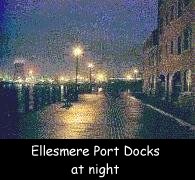 |
The
terminus and junction, popularly known as Whitby Wharf and Whitby Locks,
consisted of the locks, cottages, (for the accommodation of the lock-keepers,
linesmen and a clerk.) and an Inn for the accommodation of passengers
using the canal and river packet boats. |
| The town
is indeed very honoured to have such a celebrated man as Thomas Telford
connected with its origin, he also gave the town a complete scheme of
locks, docks and warehouses, together with the maintenance facilities
required for its success. This miniature dockland was a joy to look at,
like the beautiful elliptical stone arches which carried the warehouses
over the two arms between the lower basin and dock. There are many features
which pay testimony to the genius of Telford. After Telford's death in 1834, Thomas Cubbit, a famous builder of the time, took on and finished his designs. The first houses were built around the docks and the first main street was Dock Street. Queen Street contained some shops but later houses in Station Road were converted to retail premises as more shops were needed. |
The above information was extracted from
'ELLESMERE PORT 1795-1960' |
|
CIVIC BADGE |
By Letters Patent dated the 20th December, 1963, a Civic Badge was granted and assigned by the Kings of Arms unto the Mayor, Aldermen, and Burgesses of the Borough of Ellesmere Port in the following terms:- On a Plate encircled by a Cable Or Water Barry wavy in base thereon a Lymphad proper sail Argent charged with a Cog Wheel Sable and Flags and Pennon flying Gules. EXPLANATION The
Badge incorporates some of the features of |
CHILDER THORNTON and LITTLE SUTTON
|
CHILDER THORNTON retains little from the past though its inn, the Half Way House was a stop on the stage coach service between Chester and New Ferry in the 1770's. |
 |
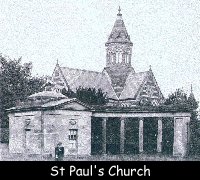
|
The Church of St. Paul, is one of the most magnificent churches in Cheshire. It was built between 1858 and 1862, at a cost of £5,000 Built in the ornate Italian style the interior of the church reaches a height of 95 feet and notable features include round arches, an ornate dome in the Byzantine style about the crossing, a square green serpentine font and a cloister walk connecting the church with a private family entrance. |
STANLOW and INCE
|
To the east of Ellesmere Port town centre are STANLOW and INCE. Both are now interwoven into the vast Shell Manufacturing Complex. |
A Cistercian abbey was founded at Stanlow in 1178. Built on the lonely and marshy Stanlow Point, the abbey has an eventful history spanning nearly 400 years, but violent storms in 1279 and 1287 caused great damage and two years later the building was devastated by fire. Only a handful of monks remained at Stanlow until the Dissolution. The site of Stanlow Abbey is between the Ship Canal and the Mersey and is now sadly inaccessible to the public, but the surviving relics of the building, later incorporated into a farmyard, are one doorway, part of a wall and four columns - all of the late 13th century. |
|
Ince is probably the oldest settlement. It was built originally on the one inhabitable site in an area of marshland and its name is derived from the ancient 'Ynys' or island. Remains of the late Perpendicular manor house, once owned by the Abbots of Chester, survive near the church. Parts of the fine refectory hall of 1399, with four large windows, can be seen near the road and other fragments are incorporated into the walls of nearby barns and houses. Despite its proximity to industry, Ince still retains its village square and atmosphere. Part of the church is early English, the tower is Perpendicular and the chancel roof is of the 17th century. The rest dates from 1854 and there is some late 19th century stained glass by Kempe. The renovated village stocks, said to date from 1671, which I believe can be seen in a nearby lane. |
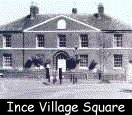 |
HOOTON
|
|
The
origins of the name 'Hooton' comes from
the two old saxon words 'ho', meaning a heel or point of land stretching
into the plain or sea, the 'tun', a farm. The name appears in the Doomsday
book as 'Hotone'. The history of Hooton Village, Hooton Park and Hooton
Hall can be traced back almost a thousand years to the Norman Conquest. For 500 years, it was the seat of the Earls of Stanley, senior line of the famous Earls of Derby. |
| Towards
the end of the fifteenth century, the Stanley's built a half timbered
Manor House. This was pulled down in the early part of eighteenth century
and was replaced by a mansion 'Hooton Hall', built from local Storeton
Stone, designed in the Italian Palladian style for the fifth Baronet,
Sir William Stanley, by the fashionable architect William Wyatt. In the middle of the nineteenth century, with family finances strained, they sold the estate to their Liverpool bankers. Hooton Park was requisitioned during the First World War as a military hospital, and in 1917 an airfield was built to train pilots from Canada and the United States. In the Second World War, Hooton again served in the war effort, remaining in use as a military airfield up to the disbanding of the Royal Auxiliary Air Force in 1957. In 1962 the airfield was transformed into the giant Vauxhall factory, now the main European production line for their 'Astra' cars and vans, whose continuing success is central to the economic well being of the area. |
|


